
Chapterhouse is Canada’s newest comic book company (established in 2015) with its mainstay Captain Canuck. The company is still a mystery to many comic readers, so I felt it was important to get some correct information about them out. This week I managed to get a chance to talk with some of the main operatives behind the enterprise. This week I settled into a comfortable booth at the Lakeview Restaurant (right near Ossington and Dundas in The Six) with Fadi Hakim, Keith WTS Morris, and Kalman Andrasofszky for a round of their great “fishwiches” and a chat.
Ivan: Fadi, I remember hearing your story that your interest in comics really began with you picking up a Captain Canuck comic when you were six years old. How did you get from there to establishing Chapterhouse in 2015?
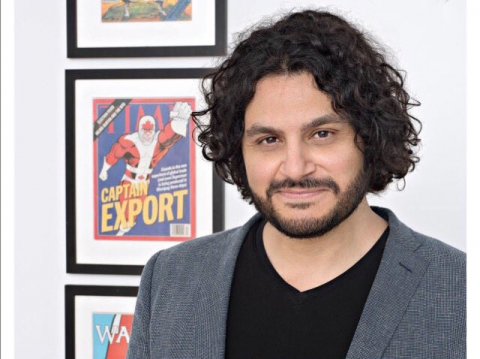
Fadi: I started collecting comics when my brother started collecting comics and he is two years older because I wanted to do everything my brother did. I was six and I finally had enough money from doing chores to buy a comic. I was at the Dixie Flea Market and I really wanted X-Men comics and then I saw the Captain [Canuck] kind of staring out of a bunch of comics. He was standing on top of the world with his hands on his hips and I said “That one.” Ever since, I’ve always held Captain Canuck close to my chest as a collector but, of course, he phased out. There was “Re-Born” in the 90s but I didn’t pay much attention. I stopped collecting comics and moved into graphic novels a little more. Then I got into the restaurant business and with the Lakeview we named a peameal bacon sandwich after the Captain. I found a Captain Canuck postcard at Valhalla, that comic store on Queen Street and found out that Richard Comely had licensed the post card to Valhalla. So I put the post card up in the kitchen and because customers were asking who Captain Canuck was, I made sure that all the staff knew. All lot of tourists wanted to know more about the Captain and one thing led to another. We had to come up with a Kids Menu and I thought it would be great if we could have an image of Captain Canuck that kids could colour.
I managed to contact Richard and he sat down with me and he licensed the character to me for basically some gift cards. I tried to give him some money but he said, “No, I really like this place. I think that my kids would bring all their kids here and get a kick out of it. I’d be happy to do it for gift cards instead.” He was releasing Captain Canuck Legacy 1.5 at the time, I think and he asked for the Lakeview to advertise in it and I did. It was a success and we started a Captain Canuck Kids Club here and brought out a member card for it, which we still have. We still have so many kids coming out just for that.
I ended up talking to Richard more and more and ideas started popping into my head. I started to ask him what happened to Captain Canuck and who’s doing what with it? There was a company called Sinking Ship Entertainment that had the rights but they were doing nothing with it. That turned out to be ironic because Sinking Ship is sort of a big deal right now with all the animation they do. So Richard and I had lots of discussions and he wondered if I was experienced enough for it. I have this idea that if you can run a restaurant, you can run anything and if you can run three restaurants you can just about run a province. In the end I acquired the license for Captain Canuck. It’s become a tradition every year that on my birthday we celebrate on the patio at The Black Bull down on Queen Street and that year (2010) Dean Henry and his friend Paul Gardiner crashed the party in the hopes of talking me into letting them work on Captain Canuck.
Their idea was to reboot Captain Canuck but this wasn’t necessarily my idea. I wanted everybody to get to know the Classic Captain Canuck because it got a great reception here at The Lakeview. We enlisted Kalman Andrasofszky and he fleshed everything out with support characters and background. In the end we had an Indiegogo campaign in 2012 and Chapterhouse didn’t begin until early 2015.
Ivan: Kalman, what was your perspective on this whole thing?
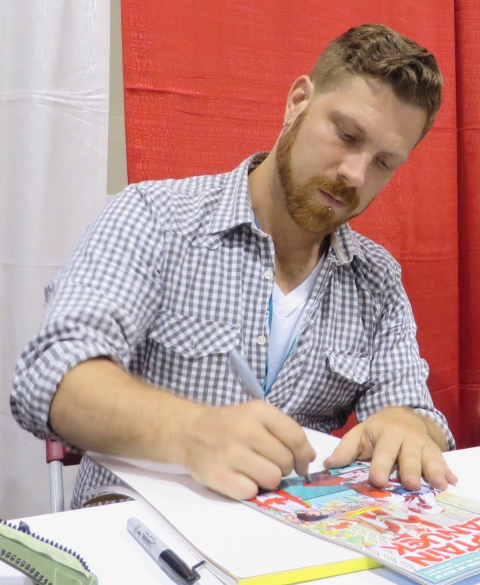
Kalman: Yeah, well… much the same. Dean reached out to my studio mate Francis (Manapul). They were working on some things for Chap 3. They were doing this sort of adult mystery web series. He has a tight contract with DC that bars him from doing any non-DC comic book work, particularly superhero work. Dean approached him to work on Captain Canuck and once he stopped laughing, he suggested that I do it. I met up with the Canuck people and we hit it off. It just started with re-designing Captain Canuck. Paul and Dean had come up with a kind of broad strokes take on the reboot and they wanted to put a package together. So we did that and came up with a few secondary cast members, drew up a short sequence, got it boarded up, had it animated and used that. The first notes they gave me for Captain Canuck were that ‘We want it to look like Bruce Timm.’, then ten minutes later ‘We want it to look like H. R. Giger.’ At one point they wanted him to have a Venom-type suit! I realized that these guys didn’t know what they wanted, so I just did what I wanted to do and, luckily, they liked it. This was long before there was a Chapterhouse. At that time, there was talk about whether or not there were going to be comics like Fadi wanted to do, or television animation, or web animation. We were all discussing and rebooting the concept and little by little refining what it was going to be. After we put the package together, they used that to pitch Smiley Guy Studios and on the strength of the art and the concept, they were happy to come on board and that led directly to the web series.
Fadi: We pitched quite a few people like Corus and Cuppa Coffee Studios. Corus wanted to buy it outright for a hundred grand. But that would have given complete control of the license and that would mean things like no more Captain Canuck sandwich at the Lakeview. This is what they have with the Nelvana reprints that Hope Nicholson and Rachel Richey did. They licensed Nelvana out to them and once IDW picked it up Nelvana was suddenly out there. In a sense this is what Chapterhouse does. We get licenses to product and attempt to make them a viable commodity. So we got everything started with an Indiegogo campaign and we hit our mark and that was how the animation series was born. We started talking about a comic book because we were doing a lot of conventions. Everybody there always asked “What can we take home?” and we had stuff such as T-shirts and things, but there was no heart and soul like a comic book to the whole thing. So George Zotti (formerly of The Silver Snail) was really into it and he helped get Kalman involved. Paul and Dean were involved in a very advisory capacity but it was Kalman who had the ball at the time and was running with it. We were doing some phenomenal stuff. But then what basically happened was that George ran out of money. He got married and he said I’ve got to tap out of this. At that point I started talking to a number of people about the viability of everything and then, early in 2015, I registered Chapterhouse as a company and with Brian got the logo made up. I’d like to mention that Walter Durajlija, of Big B fame, has been one of our biggest supporters and fans. He collaborated with us and commissioned the Classic Captain Canuck backstory in the first 6 issues of Captain Canuck. He’s also commissioned merchandise and let us share his table at a number of conventions throughout the years. It’s because of folks like him that we’re where we are today. We packaged parts of Captain Canuck #1 within All New Classic Captain Canuck: The Back Story for Comic Book Day and that was the first Chapterhouse publication
Kalman: It was the #0 issue of the series.
Fadi: 85,000 copies went out which was pretty great. Then Captain Canuck #1 came out on May 2nd after that and that seems like ‘yesterday.’ If you look at the amount of stuff we’ve produced and put out since then, it’s staggering.
Ivan: And Keith, when did you come on board?
Keith: That would have been almost a year later around the end of April 2016. Originally, I was brought on board to help with operations and the design work. With publishing, as Fadi said, it’s about obtaining licenses and multi-media opportunities and Fadi’s involvement in finding new potential and outlets for our product got so demanding that he needed someone to help with the marketing aspect and the distribution channels and that’s what I helped with.
Fadi: What happened was that we came out with Captain Canuck and we were getting into a bit of a rhythm with it. We were using a printer at the time called MDI Print that had never done comic books before. We were doing multiple alternate covers and George Zotti had the idea that when filling an order to a comic book shop for an issue of Canuck we collate the two alternate covers so that the shop gets its order filled with an equal amount of each cover. Then when we got involved with Diamond distributors, they said if you want to do that, then you have to collate them and provide stacks of each issue with the covers alternating down the whole stack so that when they count out an order of 10 to Paradise Comics, for example, they grab that amount off the stack and it has a distribution of the alternate covers. Well, the printer didn’t do collating so I’m there like an idiot personally collating every single title with alternate covers that went into a comic book store. Then I signed on Life, Death, and Sorcery, and Spirit Leaves, and Mark Shainblum and Gabriel Morrissette’s Northguard and dealing with all these concept, design, and distribution responsibilities alone became too much. It became increasingly more difficult to grow and it was at that point that Kalman suggested Keith.
Kalman: I met Keith at Fan Expo. Throughout all our ramping up to publishing and finally deciding to make our own publishing company, Anthony Del Col and Conor McCreery were sort of advisors and friendly mentor figures for us. They had kind of walked the walk with their own Kill Shakespeare project a couple of years earlier and they had struck a pretty unique deal with IDW which, when we were pitching the publishing company, provided us with a good model. They had been working with Keith. They had pulled him in to help manage their own projects. They knew the hand-wringing and banging my head against the wall with how difficult all the management aspects were with us and they suggested that Keith could be somebody who could help. I started banging the drum to Fadi for somebody else to come on board and help with these management issues and eventually Keith joined us around April of 2016.
Fadi: What Keith brought to the table was exactly what we needed which was the right kind of killer instinct. The first thing he did was to go right after a lot of what Kalman did and a lot of what I did right away pointing out that it wasn’t cost effective and you couldn’t argue with him because he came from a deep comic background not to mention that he knew everything about printing.
Ivan: So Keith was sort of a stabilizing factor….
Fadi: Well, with publishing you can lose your shirt in a few months because you have too much inventory and too much money out.
Ivan: One of the public’s perceptions of Chapterhouse was that deadlines and projected release dates were often not being met…
Fadi: It’s not easy yet, we’re dealing with the CBC right now. We’ve got a pilot lined up with them and I’m running into the same problem of cracking the whip with the creative side of the business. In the beginning, I was more lenient. I come from a restaurant background and pretty much everybody I was working with came from a comic book background. I always work with numbers in the restaurant business but here the greatest part is creative and creatives are the worst businessmen possible. For them it’s mostly imagination and when it comes to numbers and stuff they can see them but they can’t always reign themselves in to meet them. As far as publishing, it’s all about deadlines and there’s no room for procrastination. It may be good, but if it’s not out, it doesn’t matter. For me it’s not that I want to put out an inferior product but we do have goals and costs. That’s why Keith is here. He brings another perspective to the game.
Ivan: Now we’re in the first quarter of 2017. Where is Chapterhouse now?
Keith: I think right now, we’re set up to grow smartly in the best way possible. My whole goal when I came on board about a year ago was for us to be as compact and flexible as possible so that we can respond to and take advantage of shifts in the market. We always want to build organically. If we come up with a new product we want to be able to position it in the market so that it can have the greatest potential for success. For instance, the series Life, Death, and Sorcery gets great reviews when people read it all at once. It’s set up to be read as a graphic novel. We looked at all the numbers and we said ‘That’s what we’re going to do.’ We’re going to take that forward risk and put it out as an original graphic novel going forward. With Captain Canuck we know that to put out the quality that we want, with Kalman writing it and Leonard Kirk drawing it and the whole group we’ve assembled to take on that book, doing it as a yearly mini-series is the best way that we can guarantee that we get the best quality book out to the market as an event. Then we can supplement the universe that Kalman has created with other ancillary titles that also flesh out that world and are small, easily accessible to readers and will be able to exist in the market in the new trade paperback to which the industry is heavily leaning rather than just testing out and issue #3. We want to feed the weekly collector on Wednesday but also have a product that can exist in bookstores catering perhaps to a newer reader.
Ivan: How is your distribution set up?
Keith: Distribution is set up right now through Diamond which is the largest and really the only distributor of direct to store product. We also recently signed a deal with Diamond Books for product to be available in Barnes and Noble and Chapters/Indigo. My goal in 2018 is to try to get an international reach and to get our books into that burgeoning Benelux market. That’s where I think our Canadian books can also find a niche.
Ivan: Fadi, you’ve coined the term “Chapterverse” to stand for the universe of Chapterhouse characters. Can you clarify what this term means to you.
Fadi: Well, we’ve got these licenses and we had the idea of a shared universe for our characters. I’ve always wanted to cross-pollinate Northguard and Canuck and then when Kalman was writing Captain Canuck and Anthony Falcone was brought on board to write Northguard and they started to talk that way. When Keith came on board he suggested we look at doing something with Freelance and what about Fantomah….
Kalman: Chapterhouse was formed to be a publisher for Captain Canuck but by the beginning of the second arc it was already branching out into Northguard and creating a bigger universe. All of us kind of had our sights set on a bigger creative approach and a bigger universe. Bringing Keith on board was kind of recalibrating those sights and infrastructure to that bigger ambition. 2017 is the beginning of the real Chapterverse. That first arc of Captain Canuck and that first arc of Northguard is what we’re calling “year 0.” 2017 is “year 1.” Keith stepped in and looked at all the bits we had and suggested some other bits that we could pull into the idea.
Keith: Basically, when I started to look at how we could increase sales of Captain Canuck and Northguard, I realized we probably would be selling those to the same people. In a shared universe the easiest way to get you to pick up a different title is to exploit a shared commonality in a connected universe. So we took that model and built it into genres. We have a “team book” with Agents of Pact. We have a “globe-trotting, adventure book” with Freelance. We have a “superhero book” with Captain Canuck. We have a “horror book” with Fantomah. We have a “hard sci-fi book” with Northern Light and a kind of “super spy book” with Northguard. Then we have our “quirky urban superhero book” with Pitiful Human Lizard. You take all those genres together and you realize if you’re just interested in an adventure book, Freelance is a great book, and if you’re just interested in horror, then Fantomah is a great book and so on. You pick them up and you see the threads that connect all of them and this may lead you to some of the other heroes. Our goal was to make sure that each book stands on its own and is readable on its own and any crossover of small or side characters is more of a wink to the fan who is reading everything. We want to embrace a shared universe but not having the story be read through every title and not give the reader the feeling that they missed out on part of the story because they didn’t buy all of the books.
Ivan: So, there’s a solid substratum holding all the books together but it’s open ended and allows some independence to each title.
Keith: Exactly….
Ivan: Chapterhouse takes stock and pride in reaching back into Canadian comic book tradition and mining it for solid characters. Why is this an important angle for the company?
Keith: We think it’s important to embrace the history of Canadian comics and really wild and great story telling from the Golden Age and things that haven’t really been updated since. But for us, it’s always about looking far into the future and making something that will last and not just reprinting or sort of just ‘re-stamping’ an old Canadian template. Kalman’s Canuck is, on its own, a wonderful story and the fact that it has its roots and history in Richard’s classic Canuck which makes it that more rich and meaningful. So if you were to read our new Freelance book and then go back and read some of the original war-time Freelance stories, you can see the care and respect we have for the thematics, but we’re updating the genre in terms of contemporary storytelling. Fantomah is actually the one American property that allows us to get into the American side of storytelling. Almost all of the Chapterverse begins and ends in Canada, but Fantomah starts in America and allows us a take on at what America might look like in our universe and how that seeps into the Chapterverse.
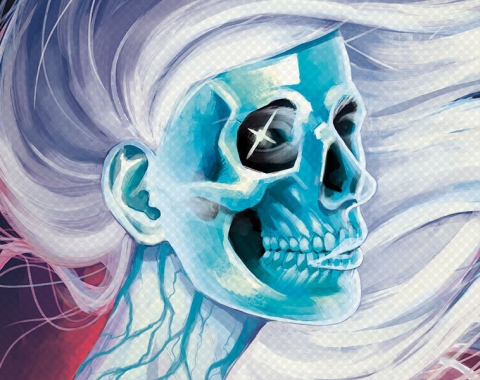
Ivan: Will she eventually have an interaction and common direction with the other characters?
Keith: Yes! Ray Fawkes, who writes that book, is doing a great job of telling the Chapterverse origin of the character.
Fadi: What Keith has said is basically the correct answer but there’s another answer on the collecting side. We’ve moved from collecting comics to collecting licenses and that’s a stretch. We used to collect comics but now we get to make comics. For me it’s this idea that there are so many diamonds in the rough.
For instance, take this place, The Lakeview [Restaurant]. It was in a sorry state when we took it over ten years ago but you could see so much value here and all it took was a little TLC with a nod into the past and a nod to the future. We have that old diner feel but play contemporary music. You can see the parallels. The 75-year history of Canadian comics is a rich one that many people don’t know about. Hey, I want to know more about it! We are just scratching the surface with some of the stuff we put out. It’s almost our duty to mine and draw attention to it.
Ivan: That’s a noble sentiment for a publisher to have. You guys respect the past and are bringing that legacy into contemporary times without losing that respect and then have plans to project that legacy on into the future.
Kalman: You’ve set it up well, Fadi. When you’re setting up your universe with Captain Canuck at the centre, you’re already sending up a flare and making a statement. So, from there, and Fadi and Keith have both touched on this, we’ve got a lot of interesting Canadian stuff from different eras. Marvel did this when they added Captain America to the Marvel Universe with Avengers #4. DC has swallowed up the Charlton Characters and Fawcett’s Captain Marvel. This is how superhero universes are made when they’re allowed to grow organically and we’re just doing the same by looking around at the wealth of material we already have here in Canada.
Keith: One of my goals when I came on board was to make Chapterhouse feel like it’s been in business a lot longer than we actually have even with the idea that what we’re doing now was as if the different eras of Canadian comics had never had breaks in their publishing so that the characters may have evolved to the point in which we are presenting them now. When you pick up Kalman’s Canuck and when you read Jim Zub and Andrew Wheeler’s Freelance you get excited because they are in a universe that feels older. When you pick up The Pitiful Human Lizard you find that Jason has written a history into it.
Ivan: This has a great irony to it Keith because you are originally American and came up here to go to school at York and now you’re championing our Canadian comic tradition. This is compounded with the irony that, for Canadians, it often takes someone from outside to tell us how good we’re doing before we really listen.
Keith: When I’m doing things for Chapterhouse I always ask if the product is representative of Canada and that it’s important to the country I’ve adopted. I also wonder if we can put into our product the very best of what Canada has to give in terms of our arts industry. When I moved here from St. Louis, there wasn’t any comic industry there (now there is, of course). When I came to Toronto, I was blown away by the support to the Arts that Toronto and the Canadian government provide. We have in Canada, pound for pound, one of the most talented groups of creators anywhere. We really do have some of the best of the best here. In America, Marvel and DC has recognized this for a long time and is making great use of Canadian talent. There’s no saying that those talented creators working on Canadian books can’t reach the same audience.
Ivan: Well, you’ve all shared with me the history of Chapterhouse and where it is right now, but what can you tell me about the future direction of the company. What will be going on in 2018 through to say 2020.
Fadi: In the broadest sense, Chapterhouse is a multi-media company and floppy comics are just one facet of it. There are 80 plus people who work for Chapterhouse and 95% of them are Canadian. We want our books to keep showcasing the amazing talent we have right here even in books that aren’t directly part of the Chapterverse such as Spirit Leaves and Die Kitty, Die.
Keith: Our novels are another aspect of what we’re doing. The Chapterverse is really important in that it provides Canadian heroes with a home to live in and explore. It’s a Canadian take on a shared universe. But we also have these creator-owned books and novel series. Our size allows us to look at a number of off-beat and interesting properties that might sit on the corner of a desk for ages at a major, large-sized publisher and never get looked at. We’ve got some biographical books debuting at TCAF that are sort of in the vein of Chester Brown. We have this rich history of biographical comics in Canada and we wouldn’t have found what’s debuting at TCAF if we weren’t a publisher that was willing to take chances on new talent. We hope to be keeping that spirit alive over the next few years.
Fadi: It’s “deliciously ambitious” what were doing. It used to be “dangerously ambitious” but we’ve been around now and gained confidence in and knowledge about what we’re doing and what works.
Keith: In terms of our publishing structure, superhero books dictate a monthly release. You have to be able to go to a store on Wednesday and pick it up. Instead of investing in twelve issues over the length of a year where you tell one story, we tell seven stories in three ‘waves.’ Wave one is January to April and that’s Freelance issues 1-4 and The Pact 1-4. Then, once those series end, Captain Canuck and Fantomah and The Pitiful Human Lizard hit the stands from May to August. Then in September, Northguard and The Northern Light finish off the year. So you can start reading a Chapterverse book in January and get seven different stories that all sort of play off each other. You get the best reward by reading all of them but you don’t have to. Then next year a cycle starts all over but the order of the books may be in a different order. We have seasons planned out right up to 2019 and the order will shift a little bit year by year.
Kalman: When I was first talking to Dean Henry and Paul Gardiner about Captain Canuck, I was pitching a four-arc progression building towards a climax which took the elements of Captain Canuck’s origin with its elements of alien intervention that created him and he eventually has to confront his makers. That’s actually where we’ve been going with Canuck and we’ve got two arcs done which are part of the year zero. Then Chapterverse year one is the third part and Chapterverse year four will complete that four-arc plan. That will bring everything together because when aliens attach the earth, everyone feels it. That, then will create another new direction for the Captain to explore going forward and then as we continue from there, some of the other series that have been part of the Chapterverse are brought into closer contact and elements from Freelance create a bigger crescendo in our third year and, who knows, from there any other one of the Chapterverse characters could grow in their importance to the Chapterverse.
Fadi: My phrase “deliciously ambitious’ is really indicative of what we’re going to do with film, animation, and television which is where we really want to go. We’d like to see an animated series with Classic Captain Canuck and there’s two animated features in the works but in the very early stages.
Ivan: Is there any chance of a live movie of Captain Canuck?
Fadi: Well, the idea is that there will be two animated features with a web series in between leading up to the big event of a live movie or TV series. We’d also like to see opportunities like this for other characters in the Chapterverse such as Northguard. It’s a really great big playground and we have lots of toys to play with.
Ivan: How about from the business side, Keith. Where would you like to see Chapterhouse in five years?
Keith: I would like to see us with a set amount of square footage and retail stores where we know we have enough product to stock the shelves. I would like us to have enough back product and future product coming out that we could get our own space in comic stores. I would also like us to have a couple of products that were hits beyond the Canadiana aspect. Captain Canuck will always be our big winner, but I’d like to see us get a hit that goes beyond the ‘kitsch’ of Canadiana. I’d like us to be in a position where creators are eagerly coming to us wanting to be part of our project rather than us going out and having to pitch our product.
Fadi: I’ve always envisioned bringing all our comic and media efforts under one brick and mortar roof where we also have a storefront with all of our books and a café so that it’s an actual headquarters for the brand. It could also serve as a tourism magnet or just a meeting place for people interested in comics. It would be a cultural foundation where young people could intern, overall just a bunch of fun stuff that could leave a legacy for the next generation. Not many people know this, but the word “chapterhouse” as the name of the company because it means a large room in a cathedral which is meant as a gathering place for a large number of people. Right now, we’re pioneering what we’re doing in Canada and we have people that want to be part of this pioneering energy. Whether we pull it off or not, we’ll have to see, but I think we’re doing a pretty good job so far and we’re having a lot of fun too.
Ivan: Well, Fadi, Keith, and Kalman, thanks for helping us understand Chapterhouse better and I’m sure we all wish the company the best of fortunes. You appear to be well on your way and we all look forward to that new product coming out.
For those of you who can make it to Toronto Comic Con this weekend, I’ll be leading two panels on Sunday. One with Chapterhouse on the past and future of Canadian Comics and the other on Canadian fandom from the 1940s (yes there was fandom then) to now. Hope to meet up with some of you.

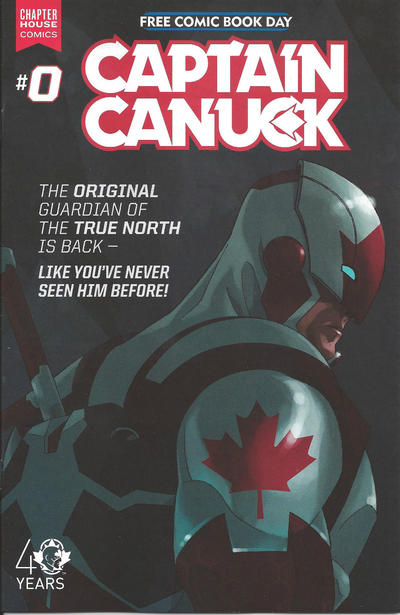
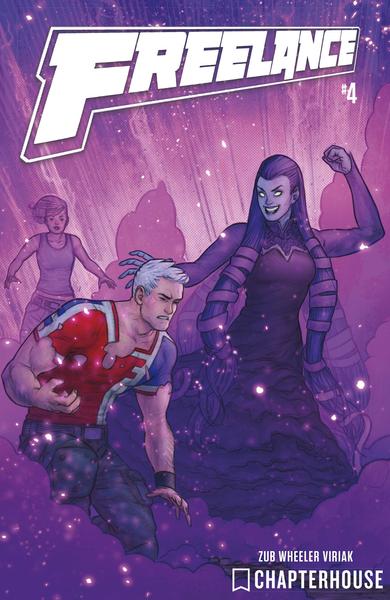
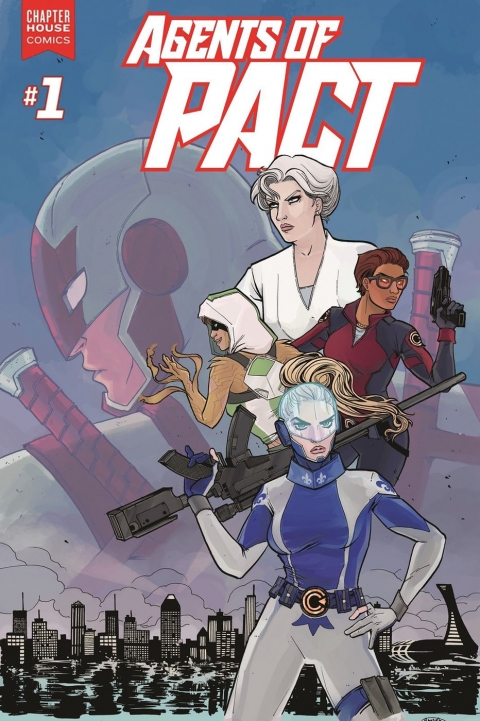
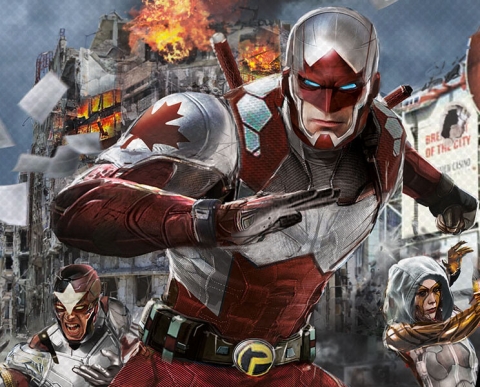
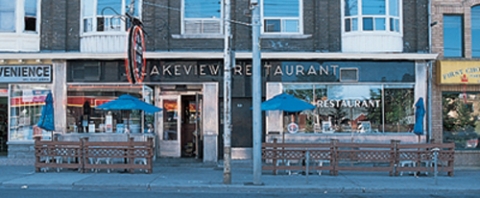
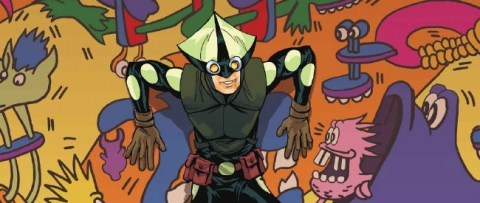
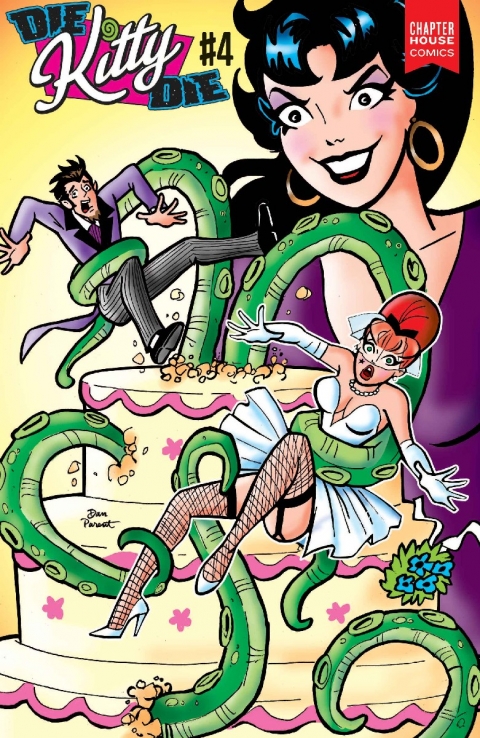
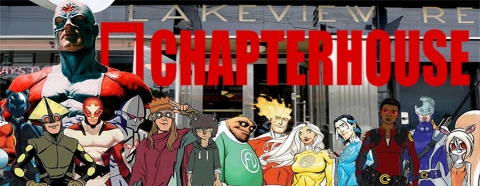



Here’s my reasoned response as a retailer who has carried Chapterhouse comics from the start.
Lateness has killed your brand. Nostalgia for Canuck was all you had going for you at the start, and it was enough to get people to check out the book. The comics were ok so people continued to buy them. Then they started shipping 2,3,4 months late. People stopped buying them. Pretty much simple as that. You’re not publishing anything that people are willing to wait for. It’s a crowded marketplace and on time is always better than not.
Given that Captain Canuck was always a property that didn’t ship on time, you’ve actually made things worse as far as public perception goes. In this retailer’s mind, and that of many others I’m sure, Captain Canuck equals Late Comics.
But at least there might be a movie!
Thank you for a retailer perspective. As Walt says we at CBD champion the local comic shop. I see George Zotti is the Chapterhouse retail sales manager: has there been any retailer outreach?
Thanks for a very informative article Ivan!
Sadly, I have to agree with Marc. I have seen the tardiness of some of these releases leaving people frustrated and ultimately turned off completely. I was also rather taken aback to see that they had published yet another reprint of the adventures of Johnny Canuck at almost $30 a copy not long after I had bought ten remaindered copies of the original for five bucks a piece. I can’t see the point in sinking funds into a book that is still seemingly in plentiful supply and not apparently in much demand anymore. It’s this kind of planning that could possibly land them in the hole if they’re not careful.
Having said all that, these guys sound like sincere, hard-working fellows, and I hope a few rough starts at the outset don’t discourage them, and wish them all the best for the future.
cheers, mel
I get what is I believe a monthly Chapterhouse email. It’s basically a rehash of their Diamond solicits plus occasional big sales for in stock merchandise. As this is the same newsletter sent directly to consumers, it’s just another disincentive to stock CH products in any depth or breadth. If George is sending that I would have thought he knew better.
Marc, your retailer perspective is indeed reasoned and valuable. I, for one, hope that the new structure of Chapterhouse can remove the stigma of failing to meet deadlines and announce release dates. It;s easier for us as collectors and readers to want to cut some slack for a fledgling Canadian comic book company that is trying to market Canadian content with Canadian creators, but as a retailer you can’t afford consistent slip ups in bringing product to market. I also hope that Chapterhouse can start treating dealers with the respect that is necessary because you are the last step in putting product in the hands of the consumer. I know they’re still trying to find their footing in a pretty stiff and competitive market and I do hope they’ll still be around in 3 o 4 years. Have we had any sort of solid Canadian comic publishing company since the dozen years that Vortex put in from 1982-94?
I agree with you, Mel. There’s a downside to the mechanics of the company that I hope they have ironed out but it’s clear that the spirit to produce Canadian material is there and I hope it’s enough for them to survive the storm and eventually succeed.
Hey Ivan, in answer to that last question I would point to Drawn and Quarterly, as well as maybe “not solid” Black Eye Productions, High Impact Studios, Semple Comics, Mad Monkey Press, Blind Bat Press, Exclaim! Brand Comics, Arcana Studio and many of those great mini comics from independent creators that have become almost as scarce as hen’s teeth these days. There was still a lot of solid work going on in the field.John Bell points out many more than the above ( in Invaders from the North) that filled the seeming vacuum in that period. And, of course, Dave Sim soldiered on through it all.